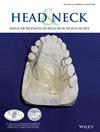The impact of digital inequities on salivary gland cancer disparities in the United States
Abstract
Introduction
Technology and internet access have become increasingly integrated into healthcare as the primary platform for health-related information and provider-patient communication. Disparities in access to digital resources exist in the United States and have been shown to impact health outcomes in various head and neck malignancies. Our objective is to evaluate the associations of digital inequity on health outcomes in patients with salivary gland cancer (SGC).
Methods
The Digital Inequity Index (DII) was developed using 17 census-tract level variables obtained from the American Community Survey and Federal Communications Commission. Variables were categorized as digital infrastructure or sociodemographic (e.g., non-digital) and scored based on relative rankings across all US counties. Scores were assigned to patients from the Surveillance-Epidemiology-End Results (SEER) database diagnosed with SGC between 2013 and 2017 based on county-of-residence. Regressions were performed between DII score and outcomes of surveillance time, survival time, tumor stage at time of diagnosis, and treatment modality.
Results
Among 9306 SGC-patients, increased digital inequity was associated with advanced-staging at presentation (OR: 1.04, 95% CI: 1.01–1.07, p = 0.033), increased odds of chemotherapy receipt (OR: 1.05, CI: 1.01–1.10, p = 0.010), and decreased odds of surgical intervention (OR: 0.94, 95% CI: 0.91–0.98, p = 0.003) after accounting for traditional sociodemographic factors. Increased digital inequity was also associated with decreased surveillance time and survival periods.
Conclusions
Digital inequity significantly and independently associates with negative health and treatment outcomes in SGC patients, highlighting the importance of directed efforts to address these seldom-investigated drivers of health disparities.


 求助内容:
求助内容: 应助结果提醒方式:
应助结果提醒方式:


